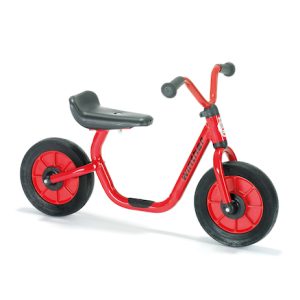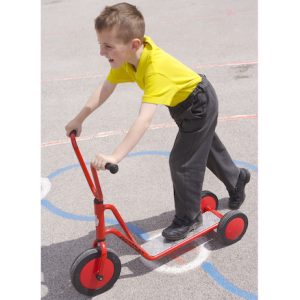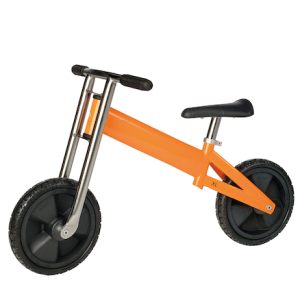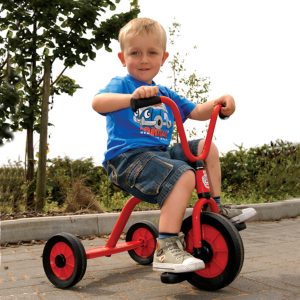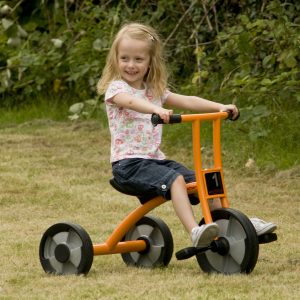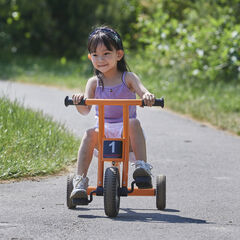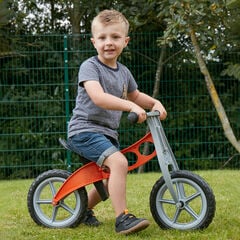Finding my freedom
I can remember when I first learned to ride a bike. We borrowed a little red bike from next door and my dad took me to the end of the road to practice- a quiet cul-de-sac I hasten to add. There were no stabilisers, it was just get on and pedal or more accurately get on and fall off. Again. And again. But I hardly remember that part. What I can remember is my first figure of ‘8’. The freedom of what I now call the ‘Hands off the saddle moment’. Me pedalling the little red bike, steering it to go where I wanted it to. Oh, the sense of freedom!
To be honest it’s a bit of an exaggeration to call it freedom. The so called freedom was less about feeling the wind in my hair or travelling to a destination of my choice and more of a small figure of ‘8’ at the end of my road, but never the less it was amazing. I can still remember that moment of first cycling on my own, even now decades later.
More than just a ride
To me, cycling is more than just an independent way to travel, more than a useful skill to have and more than simply a fun past time. Here are some of the other benefits:
- Supports an individual’s physical development; their balance, core stability, gross motor skills and their ability to manipulate an object with their hands and feet.
- Help to develop spatial awareness and proprioception (knowing where their body is in a space).
- Can help with decision making, resilience and perseverance.
- Provides opportunities to develop an awareness of rules, of others.
- Develop a sense of citizenship and a sense of independence.
- Provides a chance to explore and visit places you may never visit on foot or by car.
Barriers to riding a bike
But we all have to start somewhere and for many, access to a bike, trike or scooter is not an option. For some families it is the economic barrier, for others it is lack of a safe outdoor space. For some children, their parents have not learned to cycle and may struggle with confidence themselves. There are many reasons why learning to ride a bike is not possible.
Offering opportunities
Early years settings and schools can really help to fill that gap. We know that bikes, trikes, scooters and increasingly balance bikes are popular in settings. Many of those settings I have visited or worked with who have trikes and bikes, find these are used daily and are rarely propped up at the side redundant. Given the positive outcomes, they appear a good investment. But how do you decide what’s right for your children and your environment?
What are you looking for? What skills do you want to develop?
The Trike
Firstly think about what you want them to do for your children. If you want a ‘ride on’ that is accessible to all, then a trike may work well for you. Three wheels provides the balance and the pedals can support coordination development. They also create a great opportunity for gross motor skill development and no doubt get pulses raised too, so a real win–win. Check out the Winther Piggy Back Trike with an adjustable seat and platform at the back to piggy back others around, suitable up to 4 years or Winther Circleline Trike which will take children from 3 years upwards with different sizes available to suit your children’s needs.
Short of space or storage?
If you want to engage more children in bikes and trikes but are struggling for space or storage then consider the Winther Twin Taxi Trike. This will accommodate 3 children at once, develop co-operation and turn taking too. Again this will provide opportunities to develop some of the physical skills mentioned earlier. Maybe this is something to consider having alongside 1 person trikes and balance bikes to provide choice and variety?

Balance Bikes
However, if you want to start children on the path to cycling then I’m a real fan of balance bikes. Not only are they great fun but children get a whole host of the physical development benefits too. These include the development of core stability, gross motor skills and using their legs for striding, progressing to gliding. Children also learn to grip and steer the handle bars, resulting in the support of fine motor skills. What I really love about balance bikes is that they help children develop confidence on two wheels. Stabilisers just teach children to use stabilisers. Many may still need to learn to ride a bike once they are removed. Balance bikes help to develop cycling skills from the get go, just with no pedals to start with with the progression to pedal bikes much smoother.
Balance bikes can be used from younger to much older children, in fact children who can ride a pedal bike love a balance bike too, as often they can travel faster!! Take a look at the Cruiser balance bike. This is lightweight and therefore easy for children to steer. Beware of heavy balance bikes that children often find impossible to turn corners with and hard to move. But if you feel your balance bikes will get a lot of action and you need a sturdier bike, try the Viking Balance Bike. It is robust, but not too heavy and also very bike-like, so will have mass appeal.
Observing the children
As you can tell I’m a fan of children experiencing the freedom that 2 and 3 wheels can provide and the added physical, cognitive and social benefits too. But in order to ensure everyone has an opportunity, have you ever thought about taking a step back and observing who is riding your trikes and bikes each day in your setting? Are those dominating them already confident movers, are other children standing and watching? How do we know if they want to have go? Are they are scared to try? Do we know if they have access to these away from the setting?
It’s definitely worth taking the time to see who and how these are used, so all the children who want to, can have access. Or if you are about to embark on bikes and trikes think about who, how and where these are used. I am an advocate of physical activity of all types and would warn against allowing bikes and trikes to consistently dominate your play space at the expense of other physical play. But that said, find time and space for cycling, pedalling and scooting. Let the children feel the wind rustling their hair and that amazing sense of achievement and freedom.
Thanks to Philippa Youlden for writing this blog
Philippa Youlden is a freelance PE, sport, wellbeing and education consultant passionate about the power of movement, physical activity and high quality PE for all children. She works nationally delivering CPD, developing educational campaigns and writing resources for a range of organisations and networks, supporting children to enjoy, thrive and fulfil their potential through physical activity.
Philippa recently had the pleasure of working with British Cycling and the Youth Sport Trust to develop Ready Set Ride, a free resource (app and website) to support children with their cycling journey, from off the bike, to balance bike to pedal bike. www.readysetride.org.


